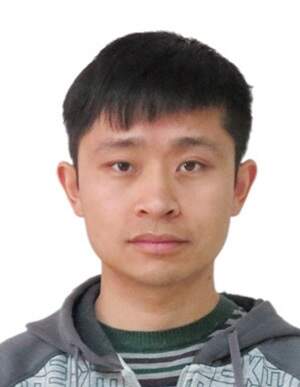
-
Likun Wang
Ph.D, Prof.
-
Principal Investigator National Laboratory of Biomacromolecules, IBP
Research Interests: Endoplasmic reticulum stress, the Unfolded Protein Response, and the related diseases
Email: wanglikun@ibp.ac.cn
Tel: 010-64881162
Address: 15 Datun Road, Chaoyang District, Beijing, 100101, China
Chinese personal homepage
- Biography
-
2001 - 2005 Beijing Normal University, B.S.
2005 - 2010 Institute of Biophysics, Chinese Academy of Sciences, Ph.D.
2010 - 2014 University of California, San Francisco, Postdoctoral Employee
2014 - 2017 University of California, San Francisco, Associate Specialist
2017 - Institute of Biophysics, Chinese Academy of Sciences, Principle Investigator
- Awards
- Membership in Academies & Societies
- Research Interests
-
In eukaryotes, about one third of the newly synthesized peptides are destined to enter the endoplasmic reticulum (ER) lumen. The ER contains many chaperones and enzymes, providing a unique environment for protein folding, post-translational modification and quality control of secretory proteins. Intrinsic and extrinsic stimulations such as genetic mutation, aging and environmental stresses may lead to unfolded proteins accumulation in the ER and ER dysfunction, a condition called ER stress. This triggers the Unfolded Protein Response (UPR), which can further induce various cellular responses, including ER homeostasis maintenance, cell differentiation, apoptosis, etc. Aberrance of the UPR can cause diseases such as neurodegenerative disease, diabetes, and cancer. We aim to understand the function of the ER and the mechanism of the UPR, and how it relates to ER stress-related diseases.
Current interests:
1. The regulatory mechanism of the UPR. Using CRISPR/Cas9 screening, we identified several genes that participate in the UPR activation, which is independent on the accumulation of unfolded proteins in the ER lumen. For example, our recent study revealed that ER-mitochondria interplay and calcium concentration alteration specifically activate the PERK pathway but inhibit the other two UPR branches, IRE1α and ATF6. Further studies will be done to discover ER stress-independent ways that activate and regulate the UPR.
2. The UPR and cell-cell communication. We are interested in the UPR across multiple cells, including how cell-cell communication leads to ER stress, and what effect the UPR has on cell-cell communication. Our recent work demonstrates that ER-stressed cancer cells secret cholesterol via small extracellular vesicles to activate myeloid-derived suppressor cells and suppress anti-tumor immunity, suggesting the importance of lipids in cell-cell communication under ER stress. We want to understand how lipid-mediated UPR signaling across multiple cells influences tumor immunity and metabolism.
3. Visualizing the accumulation of unfolded proteins in the ER lumen in living cells. Despite the consensus that ER stress induces the UPR, accumulating evidence suggests that ER stress does not always elicit the UPR, and the UPR could be activated in an ER stress-independent manner. We have developed fluorescence-based method to monitor unfolded protein accumulation in the ER in living cells. This may help us to better understand the relationship between ER stress and the UPR under physiological and pathophysiological conditions, and to visualize how unfolded proteins influence ER morphology and protein homeostasis.
- Grants
- Selected Publications
-
1. Tao Li, Hongyu Zhao, Gaofeng Guo, Shuwei Xia,Likun Wang. VMP1 affects endoplasmic reticulum stress sensitivity via differential modulation of the three unfolded protein response arms.Cell Reports, 2023, 42(3): 112209.
2. Zaili Yang, Yazhen Huo, Shixin Zhou, Jingya Guo, Xiaotu Ma, Tao Li, Congli Fan,Likun Wang. Cancer cell-intrinsic XBP1 drives immunosuppressive reprogramming of intratumoral myeloid cells by promoting cholesterol production.Cell Metabolism, 2022, 34(12): 2018-2035.e8
3. Rajarshi Ghosh*,Likun Wang*, Eric S. Wang, B. Gayani K. Perera, Aeid Igbaria, Shuhei Morita, Kris Prado, Maike Thamsen, Deborah Caswell, Hector Macias, Kurt F. Weiberth, Micah J. Gliedt, Marcel V. Alavi, Sanjay B. Hari, Arinjay K. Mitra, Barun Bhhatarai, Stephan C. Schürer, Erik L. Snapp, Douglas B. Gould, Michael S. German, Bradley J. Backes, Dustin J. Maly, Scott A. Oakes, Feroz R. Papa. Allosteric inhibition of the IRE1α RNase preserves cell viability and function during endoplasmic reticulum stress.Cell, 2014, 158(3): 534-548 (*equal contribution)
4. John-Paul Upton*,Likun Wang*, Dan Han, Eric S. Wang, Noelle E. Huskey, Lionel Lim, Morgan Truitt, Michael T. McManus, Davide Ruggero, Andrei Goga, Feroz R. Papa, Scott A. Oakes. IRE1α Cleaves Select microRNAs During ER Stress to Derepress Translation of Proapoptotic Caspase-2.Science, 2012, 338(6108): 818-822 (*equal contribution)
5.Likun Wang*, B Gayani K Perera*, Sanjay B Hari, Barun Bhhatarai, Bradley J Backes, Markus A Seeliger, Stephan C Schürer, Scott A Oakes, Feroz R Papa*, Dustin J Maly*. Divergent allosteric control of the IRE1α endoribonuclease using kinase inhibitors.Nature Chemical Biology, 2012, 8(12): 982-989 (*equal contribution)
6. Xi Wang*,Likun Wang*, Xi'e Wang, Fei Sun, Chih-chen Wang. (2012) Structural insights into the peroxidase activity and inactivation of human peroxiredoxin 4.Biochemical Journal, 2012, 441(1):113-118 (*equal contribution)
7.Likun Wang, Lei Wang, Stefano Vavassori, Shengjian Li, Huimin Ke, Tiziana Anelli, Massimo Degano, Riccardo Ronzoni, Roberto Sitia, Fei Sun, Chih-Chen Wang. Crystal structure of human ERp44 shows a dynamic functional modulation by its carboxy-terminal tail.EMBO Reports, 2008, 9(7): 642-647
-
Patents
Modulation of ire1 (WO 2014052669 A1).
Combined modulation of ire1 (WO 2016004254 A1).
(From Likun Wang, July 17, 2023)

